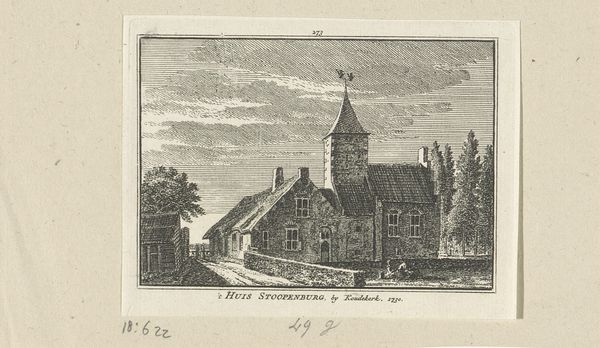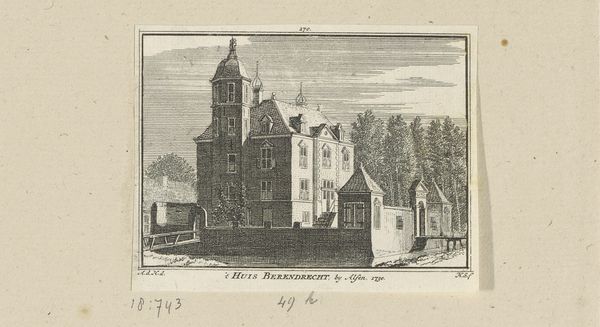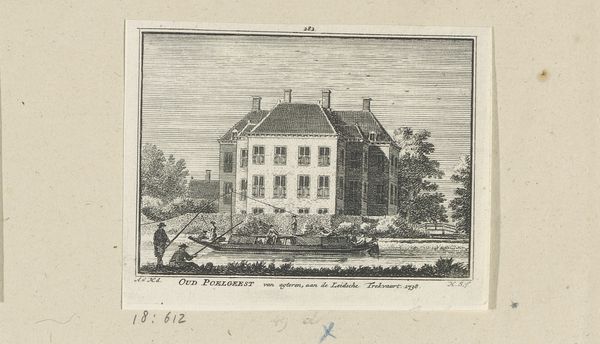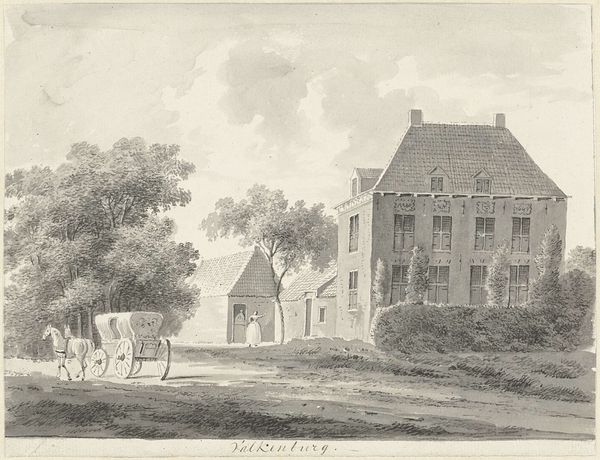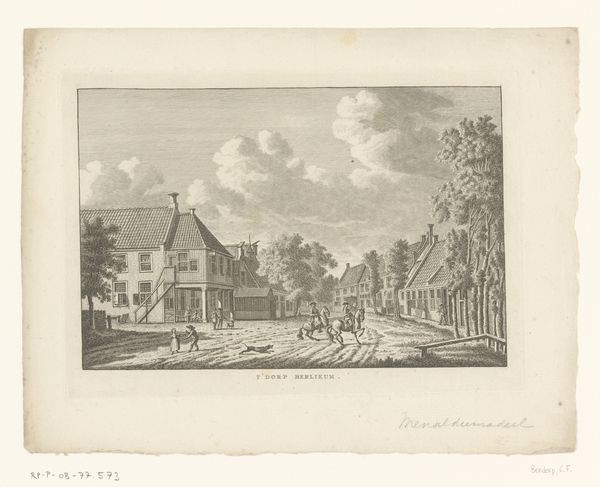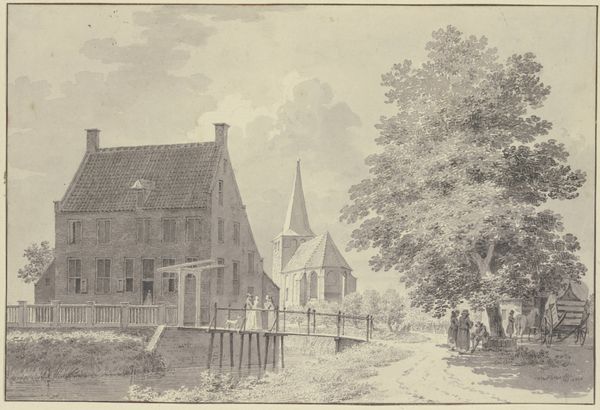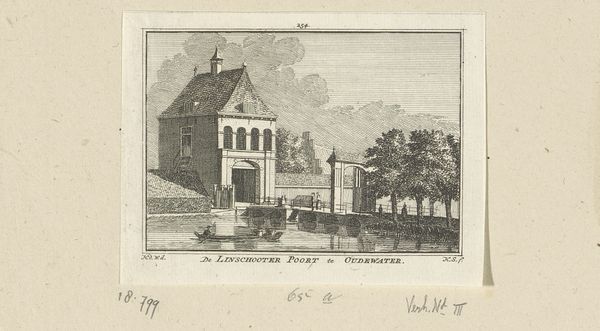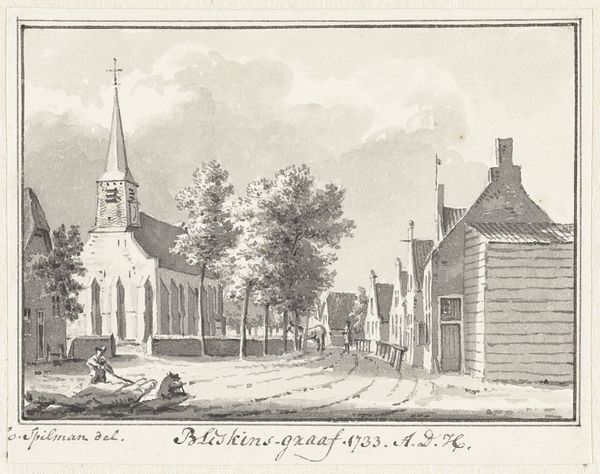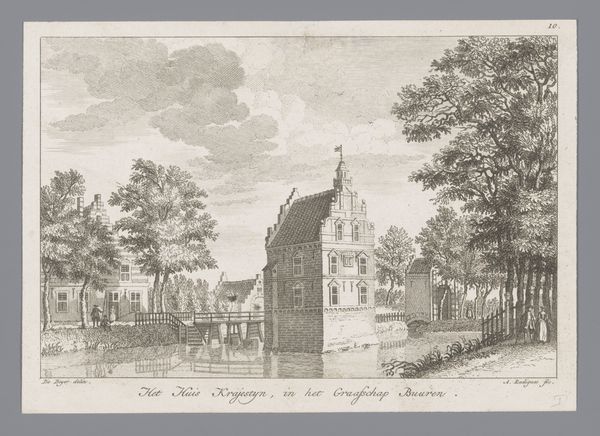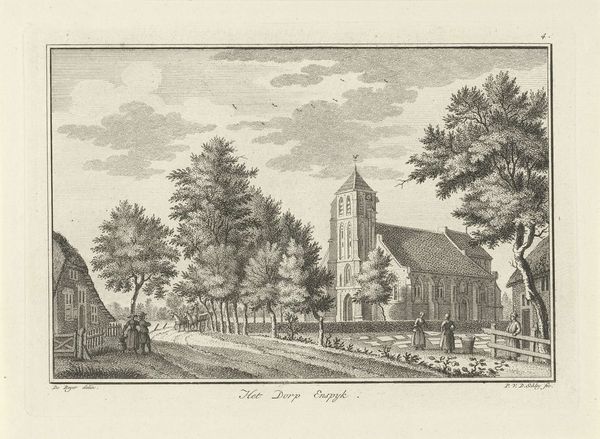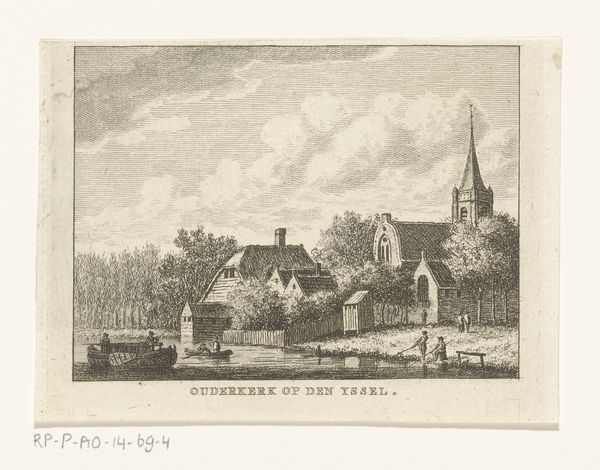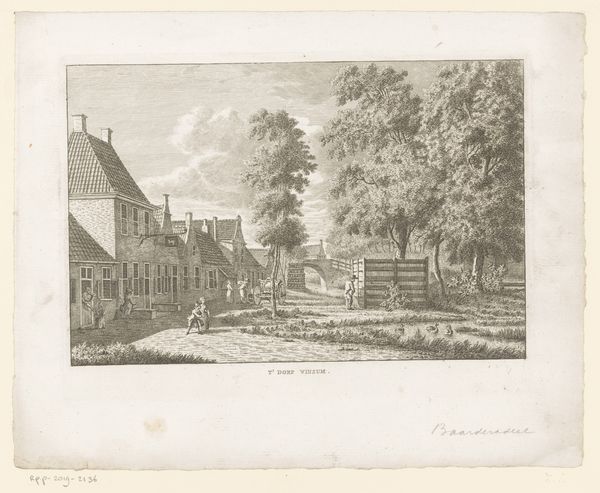
print, engraving
#
dutch-golden-age
# print
#
landscape
#
cityscape
#
engraving
Dimensions: height 83 mm, width 108 mm
Copyright: Rijks Museum: Open Domain
Hendrik Spilman created this print of Huis Oud-Alkemade around 1730, utilizing the intaglio process of etching. This method involves using acid to bite lines into a metal plate, which is then inked and pressed onto paper. Consider the nature of this process. It is not immediate, like a sketch, but rather involves careful planning and skilled execution. The dense network of fine lines that defines the image reveals a controlled process, mirroring the architecture it depicts. We can see the facade of a dignified country house through Spilman's careful rendering, capturing the textures of brickwork and foliage with a sense of precision. Yet, the print also speaks to a wider social context. Etchings like this were often produced in multiples, serving as a means of documenting and disseminating images of property and status. The very act of reproducing the house in print elevates its significance beyond that of a mere dwelling. Ultimately, this print invites us to consider the relationship between art, architecture, and social standing, reminding us that even seemingly simple images are imbued with complex cultural meanings.
Comments
No comments
Be the first to comment and join the conversation on the ultimate creative platform.
